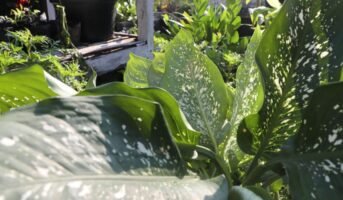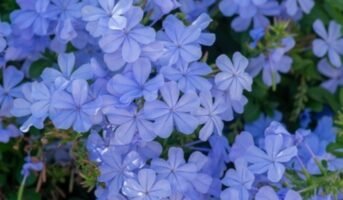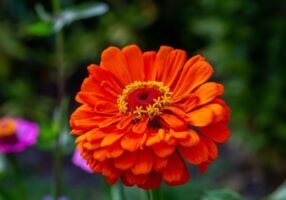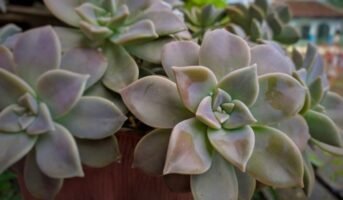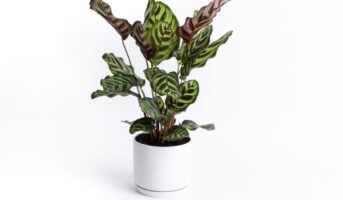The narcissus flower has been a symbol of love, beauty, and joy for centuries. It’s also known as “daffodil”.
The narcissus flower is a perennial in the daffodil family. It is native to Europe and Asia, although it is now found throughout most of the world. The plant grows from bulbs and can grow up to 15 feet high. The flowers are bell-shaped and can be white, yellow, orange or red. They have six petals that open at night and close during the day.
Narcissus flowers are used as ornamental in gardens because they attract many insects that pollinate them and keep them healthy. They are also used in bouquets to add colour to them.

Source: Pinterest
Narcissus flower: Quick facts
| Botanical Name | Narcissus |
| Common Name | Daffodil |
| Genus | Narcissus |
| Family | Amaryllidaceae |
| Mature Size | 4-24 feet |
| Order | Asparagales |
| Cultivation | Mediterranean Region |
| Benefits | Traditionally used for treating epidemic dysentery and congestive bronchial catarrh in children. |
What’s the difference between a Daffodil and a Narcissus?
All daffodils are the members of the genus Narcissus. Daffodil is the common name used for garden forms of the genus Narcissus. All in all, daffodil is the official common name given to all of the plants that fall into this genus. So, if a plant is considered a Narcissus, it is also considered a daffodil. Numerous species of daffodils fall into the genus Narcissus.
Do Narcissus come back every year?
As mentioned above, Narcissus plants are perennial, which means they come back year after year, provided that they are given proper care. What’s more is that they can even naturalise or spread on their own.
Where do Narcissus plants grow best?
Narcissus flowers can easily be planted indoors, in between shrubs, or as borders in your home garden. Wherever you choose to plant them, just make sure to pick a spot that receives at least partial sunlight. Also, the chosen location should have fertile soil with adequate drainage. The solid needs to be moist, but standing water or really wet soil can make the plants susceptible to rot.
Narcissus flower: How to grow it?

Source: Pinterest
The narcissus flower is a gorgeous plant that grows in many parts of the world. The plant has beautiful, yellow flower clusters that are often used as an ornamental decoration. The plant is easy to cultivate and can be grown indoors or outdoors.
To grow the narcissus flower indoors, place a pot with a drainage hole in a sunny area of your home. Fill the pot with soil and add water until it’s about 2 inches below the rim of the pot.
The first step to growing narcissus is preparing your soil. When you see roots emerging from around the drainage hole, plant your narcissus bulb in the ground outside. You can also grow this plant indoors using bonsai soil. However, it will take longer for it to bloom if you do so. You can use any type of potting mix, but you will need to make sure it has good drainage. Also, make sure your pot has holes in the bottom so that water can drain out easily.
To grow a narcissus bulb outdoors in full sun, remove any dead leaves from the bulb before planting it in the soil at least 2 inches deep. Make sure that there are no rocks or metal objects near where you plan on planting your bulbs so that they do not compete with each other for sunlight during their growth period (which may take up to three months).
Water regularly during this time frame until they begin growing new leaves.
How to take care of a Narcissus plant?

Source: Pinterest
Narcissus bulbs are usually planted in the spring or early summer, but they can also be started indoors in February or March. Planting time varies depending on where you live, but it’s generally between February 15th and April 15th.
You’ll want to keep your Narcissus bulbs well-watered until they’re ready for transplanting. To do this, place them in a pot with good drainage and water them thoroughly once or twice per week until they’re ready for their new home outside.
It’s a good idea to protect your bulbs from frost during this time of year (especially if you live in an area with cold winters), so be sure to use a layer of mulch around your bulbs before planting them out in the garden.
Narcissus flower: Things to remember

Source: Pinterest
Narcissus is a flower that can be found in many gardens across the world. The seeds of this plant are eaten by birds and other animals, who spread their seeds around. Narcissus flowers are beautiful, with their large petals, but they also have many drawbacks.
The first drawback is that these plants can be difficult to grow. They need a lot of light and water to thrive, and they also need plenty of sunlight to develop properly. This means that if your garden doesn’t get enough sunlight, you could end up with a stunted or even dead narcissus plant.
Another problem with narcissus is that they require lots of fertiliser to survive and thrive. If you don’t give them enough fertiliser, they won’t grow properly or at all. The best way to avoid this problem is by using organic fertilisers as much as possible. This will keep your plants healthy and happy while helping them grow faster than normal.
Finally, Narcissus plants are so fragile and sensitive when it comes time for blooming. They need careful planning and organisation if you want them to bloom each year properly without getting damaged by frost or drought conditions.
Narcissus flower: Uses

Source: Pinterest
- Ornamental: Narcissus flowers are used in many different areas of life, including decorating rooms and gardens and making perfumes. These flowers are popularly used in decorating rooms because of their stunning colours and patterns. You can use them in almost any room or setting.
- Medicinal: Narcissus flowers have been used as medicine for centuries because of their healing properties. A significant amount of vitamin C and beta carotene can be found in them, both of which are essential for human health.
Narcissus plant: Toxicity
All the parts of Narcissus plants contain a harmful chemical called lycorine and are toxic. When swallowed, these plants can cause symptoms like abdominal pain, diarrhoea, nausea, and vomiting. Eating its bulbs can lead to an upset stomach and a severe irritation of the mouth. Also, its sap can cause eye and skin irritation. In humans, these symptoms are usually not life-threatening and resolve on their own within a few hours. However, more severe problems like drowsiness, low blood pressure, and liver damage, have been reported in animals who consumed large amounts of the plant. It’s highly advisable to keep Narcissus plants out of the reach of children and pets.
FAQs
What is the lifespan of a narcissus flower?
From six weeks to six months.
What does the narcissus flower represent?
The narcissus flower is believed to represent creative thinking, inspiration, awareness and introspection, and vitality.
What is the lifespan of narcissus bulbs?
It is possible to store daffodil bulbs for 12 months before planting them as long as they are stored correctly.
What is the number of petals on a narcissus flower?
Flowers of Narcissus have six petal-like tepals, each topped by a cup- or trumpet-shaped corona.
Housing News Desk is the news desk of leading online real estate portal, Housing.com. Housing News Desk focuses on a variety of topics such as real estate laws, taxes, current news, property trends, home loans, rentals, décor, green homes, home improvement, etc. The main objective of the news desk, is to cover the real estate sector from the perspective of providing information that is useful to the end-user.
Facebook: https://www.facebook.com/housing.com/
Twitter: https://twitter.com/Housing
Email: [email protected]

